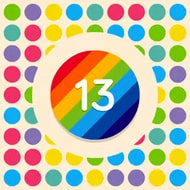

Impossible 13 is a deceptively simple yet intensely challenging puzzle experience where your aim is to merge identical numbered tiles and eventually create the tile numbered 13. The interface is clean, the mechanics are intuitive, but the gameplay is unforgiving if you make even a few poor choices. Every move counts, and that’s what makes this game so absorbing.
At the heart of Impossible 13 is the goal of merging tiles to reach number 13. You start with low-numbered tiles, usually ones and twos, and must combine like values to progress up the number chain. For every successful merge, your score increases. Higher merges give you larger score boosts. Here’s how scoring generally works:
Score isn’t just a reflection of success—it also acts as a motivating factor to push harder and think smarter in every new attempt.
Many players struggle in Impossible 13 due to a few repeat errors. Learning to avoid these pitfalls can greatly extend your gameplay and improve your results:
Recognizing and correcting these mistakes will not only help you last longer but also make the experience more enjoyable and strategic.
Impossible 13 rewards players who stay consistent and learn from each session. It’s not just about reflexes but about developing the right mindset for gradual improvement. A daily routine that includes short, thoughtful sessions can sharpen your merging instincts over time. Consider these habits:
Incorporating these routines will help you see steady progress and transform Impossible 13 into a satisfying mental challenge you’ll want to return to regularly.